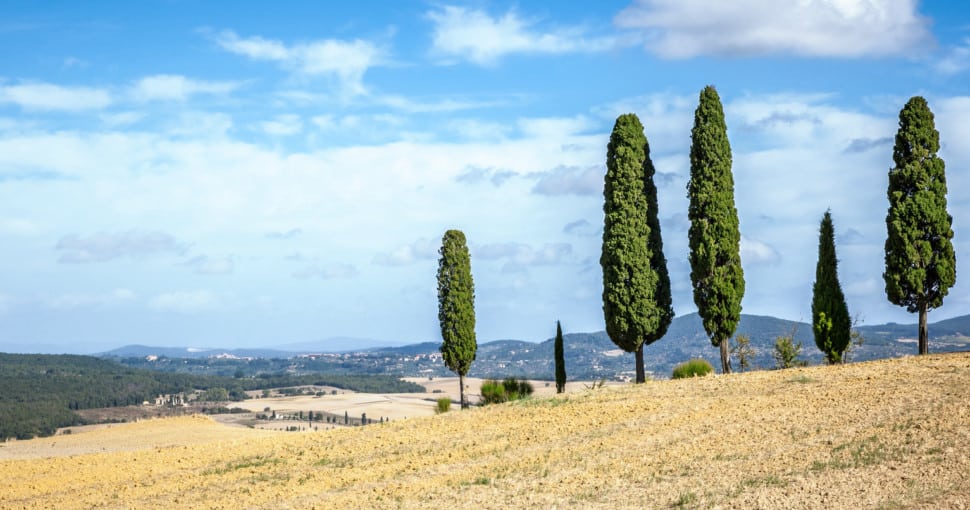Italian cypress, Cupressus sempervirens, is a tall columnar tree that is iconic of Mediterranean landscapes and villages. Italian cypresses feature in many of Vincent van Gogh’s paintings, including his famous work, The Starry Night. Planting an Italian cypress (or a look-alike) will add structure and height to the garden.
Contents
The Italian cypress is a true conifer, meaning that its foliage is evergreen, and it produces cones for reproduction. Other conifers include juniper, redwood, spruce, fir, cedar, pine, and yew.
These trees are extremely long-lived. Many specimens in the world are over 1000 years old, and there are Italian cypress trees in Iran that are over 4000 years old! They are traditional symbols of death and mourning. In many parts of Europe and the Muslim world, they are planted in cemeteries.
Italian cypress is a prized landscape tree all over the world. Their tall, slender, upright growth form makes them a popular ornamental tree. When fully grown, they can achieve heights of over 100 feet and 5 feet wide, but generally, Italian cypresses in gardens grow to around 40 feet tall and 2 to 3 feet wide.
Read More: Cypress Tree Benefits
As with everything, there are pros and cons to growing Italian Cypress trees. For instance, Italian cypress is hardy in USDA zones 7 through 10. In regions where growing one of these beautiful trees is not an option, there are many similar-looking trees to choose from.
1. American Arborvitae
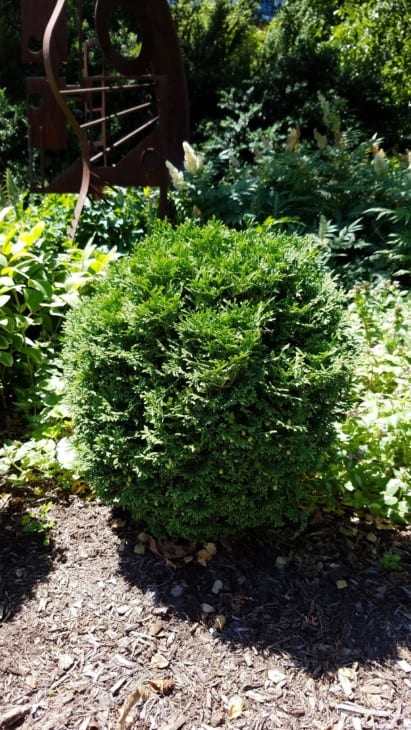
The American arborvitae, Thuja occidentalis, is an evergreen tree that also grows in a tall column shape, like Italian cypress. It is closely related to the Italian cypress because it is also a member of the Cupressaceae family. As a conifer, it also produces small cones for reproduction.
American arborvitae is native to North America and is hardy in USDA zones 2 through 7. This means that you can grow American arborvitae if you live in an area where you cannot grow Italian cypress.
American arborvitae has been cultivated as an ornamental tree for a long time. Semi-dwarf varieties are ideal for urban gardens. They are very slow-growing trees that will take 15 to 20 years to reach a height of 12 to 14 feet.
2. Lombardy Poplar
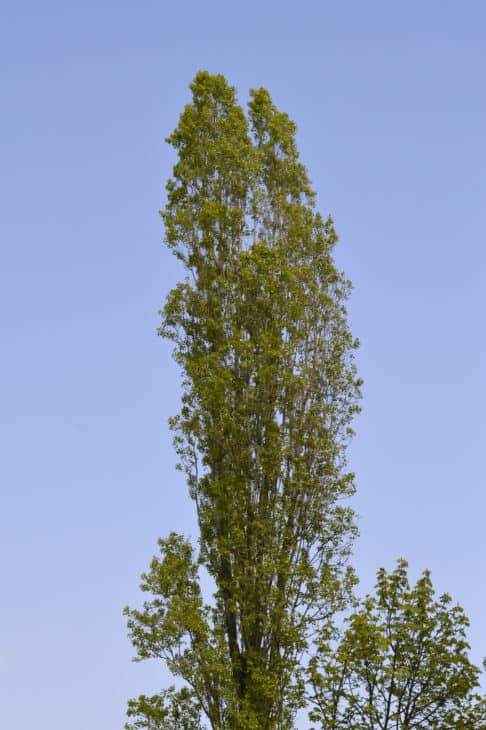
Populus nigra, or the Lombardy poplar, may not be closely related to Italian cypress, but its tall, upright, columnar growth form means that it looks very similar. They are deciduous trees that turn golden in the fall and lose their leaves through winter.
In rural areas, these trees are often planted in rows as windbreaks. They can reach 40 to 60 feet in height and grow quite rapidly, especially in warm climates. Lombardy poplars are hardy in zones 3 to 9.
3. Dwarf Alberta Spruce
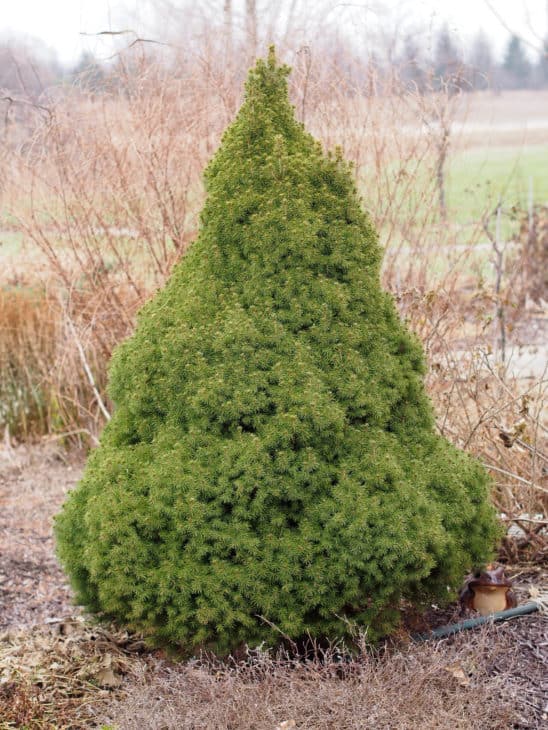
Picea glauca ‘Conica’, or dwarf Alberta spruce, has been cultivated as a small ornamental tree. Closely related to the Italian cypress, this evergreen conifer looks very similar. It grows to around 10 to 13 feet tall when mature and grows to about 7 feet wide at its base.
The dwarf Alberta spruce can be pruned to keep it narrower and more cylindrical in shape, like Italian cypress. Native to North America, they are hardy in zones 3 to 8 – a perfect alternative if you cannot grow an Italian cypress!
4. Moonglow Juniper
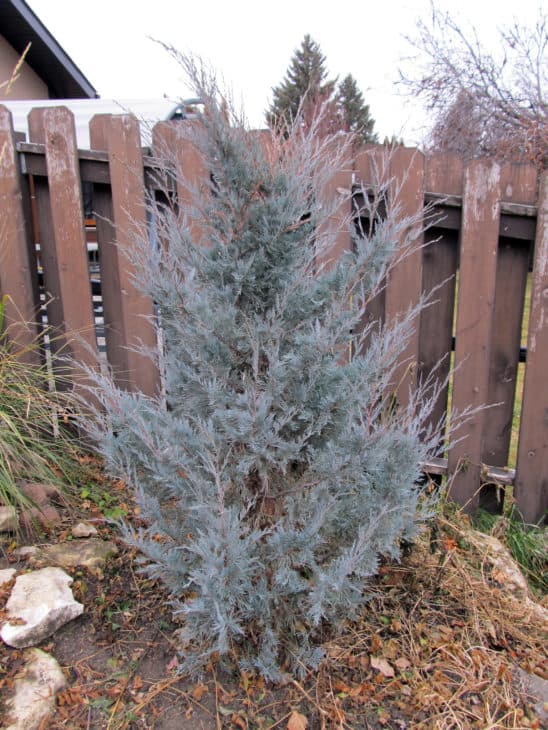
Juniperus scopulorum ‘Moonglow’ is a tall, slender juniper that has evergreen foliage and looks strikingly similar to Italian cypress. It has dense foliage and grows as an upright column.
These beautiful conifers can reach heights of up to 30 to 40 feet but can stay shorter if pruned. Its needle-like foliage is blue-green in color and has a silvery glow, hence the name ‘Moonglow’.
This species of juniper is native to North America and is hardy in zones 4 to 9. This makes it a great alternative to Italian cypress. The Juniper tree produces berries that are mildly toxic.
5. Red Cedar
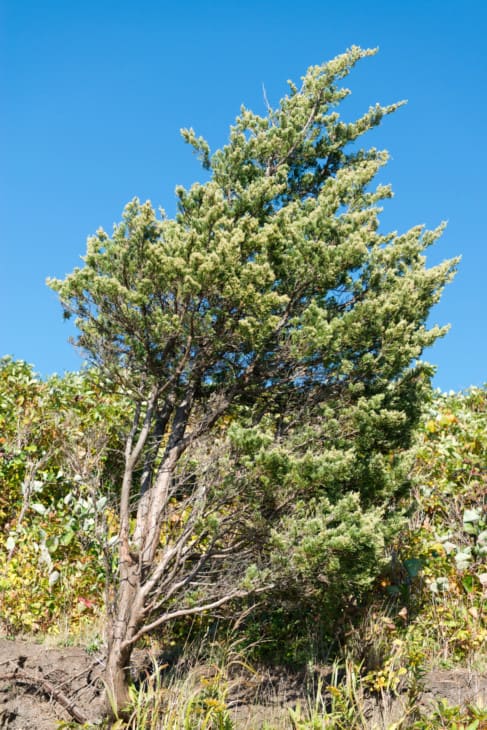
Red cedar is a somewhat misleading name for this tree as it is actually a juniper – Juniperus virginiana. This coniferous tree is related to the Italian cypress and resembles it in many ways. Its brilliant green foliage is evergreen, and it has a tall, pyramid-shaped growth form.
It can grow to heights of up to 15 feet and 2-3 feet wide at the base. Red cedar is naturally more bottom-heavy than Italian cypress, but with some pruning, it can be kept narrow and columnar.
Red cedars are native to North America and are hardy in zones 3 to 9. Red cedar is a wonderful tree that is highly adaptable and will grow where Italian cypress does not.
6. Kindred Spirit Oak
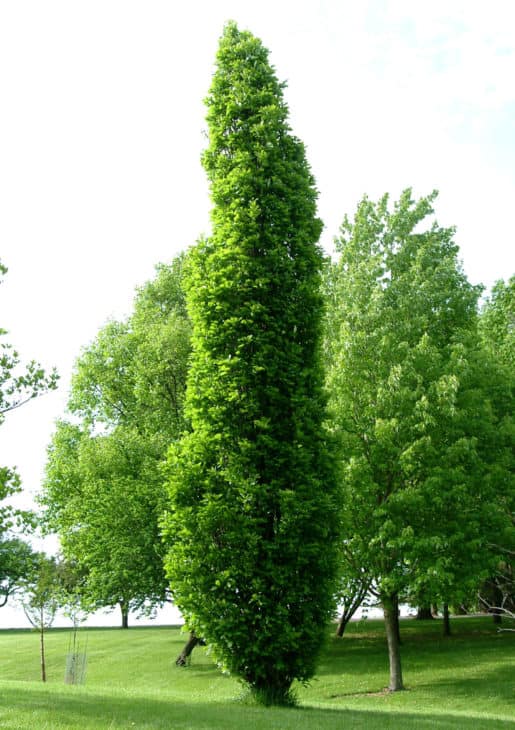
We do not generally think of oak trees as tall and cylindrical, but the Kindred Spirit Oak, Quercus x warei ‘Nadler’ is a cultivar that has an upright, columnar growth form. They are cultivated as deciduous ornamental trees and bring fall color as well as height and structure to the garden.
These upright oak trees are small, fast-growing trees that only reach 30-40 feet tall and are around 4 feet wide. In the fall, the lush, glossy leaves turn a bright red. Kindred Spirit Oak trees are hardy in zones 4 to 7, so they are a good alternative to Italian cypress.
7. Sky Pencil Holly
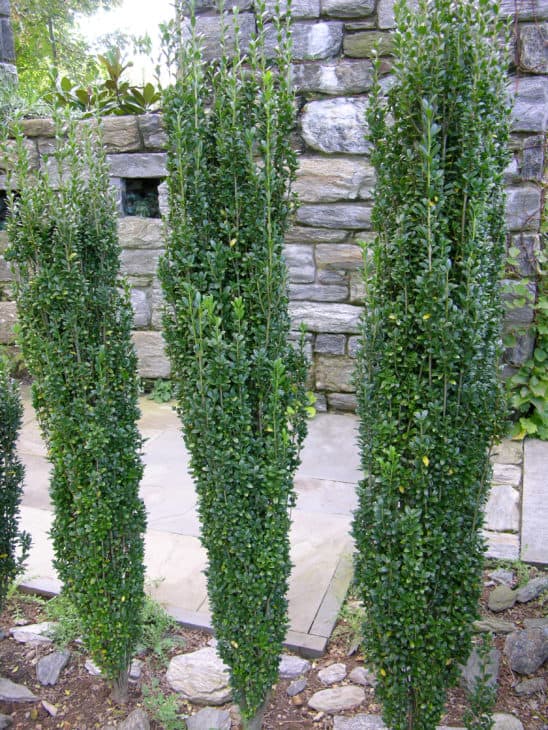
Ilex crenata ‘Sky Pencil’, or Japanese holly, looks almost exactly like a miniature Italian cypress. If you want the shape and impact of Italian cypress without the height, this plant is for you!
These dwarf evergreen trees only reach a height of 8 to 10 feet tall and grow 1 to 2 feet wide. The leaves are glossy and deep green without any prickles. Japanese holly will happily be pruned and shaped to keep it narrow and columnar.
As their common name suggests, they are native to Japan. They are hardy in zones 5-9, so they are great if your garden is not large enough for an Italian cypress or your climate cannot accommodate one.
8. Hinoki Cypress
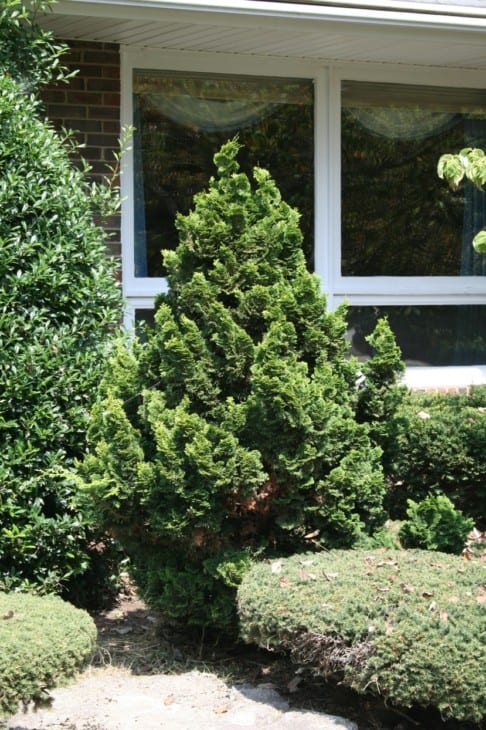
Chamaecyparis obtuse, AKA the Hinoki cypress, looks very similar to Italian cypress. It grows in a tall, slender column shape, and its bright green evergreen foliage resembles Italian cypress.
Slender Hinoki cypress has been cultivated as an ornamental tree for a long time. Dwarf cultivars are available that only grow a few feet tall. Full-size Hinoki cypress trees can reach up to 75 feet tall.
These trees are native to Japan. They prefer growing in a humid climate and are hardy in zones 5 to 8. If you are looking for a pint-sized alternative to Italian cypress, this is the tree for you.

